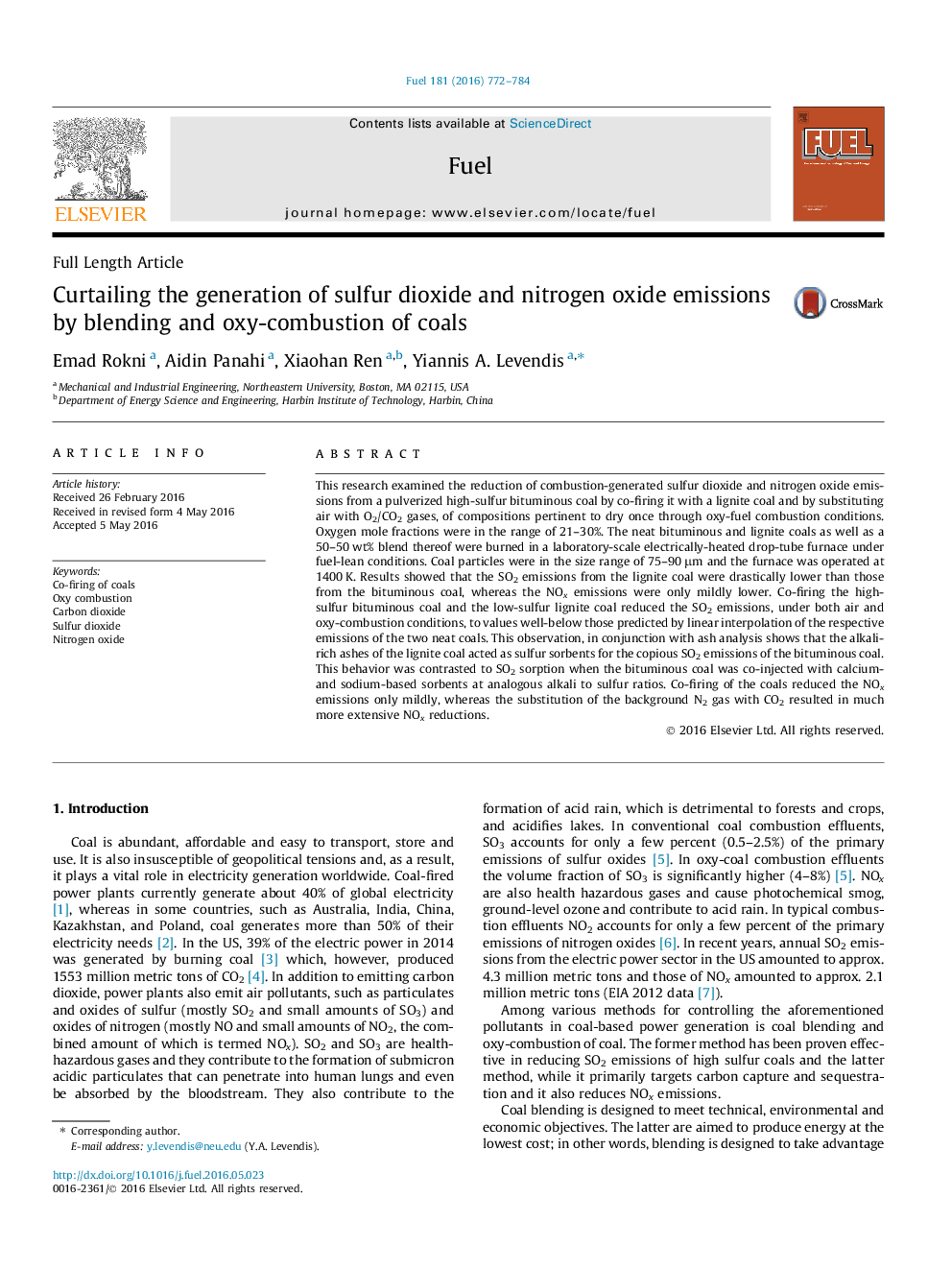| Article ID | Journal | Published Year | Pages | File Type |
|---|---|---|---|---|
| 204964 | Fuel | 2016 | 13 Pages |
This research examined the reduction of combustion-generated sulfur dioxide and nitrogen oxide emissions from a pulverized high-sulfur bituminous coal by co-firing it with a lignite coal and by substituting air with O2/CO2 gases, of compositions pertinent to dry once through oxy-fuel combustion conditions. Oxygen mole fractions were in the range of 21–30%. The neat bituminous and lignite coals as well as a 50–50 wt% blend thereof were burned in a laboratory-scale electrically-heated drop-tube furnace under fuel-lean conditions. Coal particles were in the size range of 75–90 μm and the furnace was operated at 1400 K. Results showed that the SO2 emissions from the lignite coal were drastically lower than those from the bituminous coal, whereas the NOx emissions were only mildly lower. Co-firing the high-sulfur bituminous coal and the low-sulfur lignite coal reduced the SO2 emissions, under both air and oxy-combustion conditions, to values well-below those predicted by linear interpolation of the respective emissions of the two neat coals. This observation, in conjunction with ash analysis shows that the alkali-rich ashes of the lignite coal acted as sulfur sorbents for the copious SO2 emissions of the bituminous coal. This behavior was contrasted to SO2 sorption when the bituminous coal was co-injected with calcium- and sodium-based sorbents at analogous alkali to sulfur ratios. Co-firing of the coals reduced the NOx emissions only mildly, whereas the substitution of the background N2 gas with CO2 resulted in much more extensive NOx reductions.
